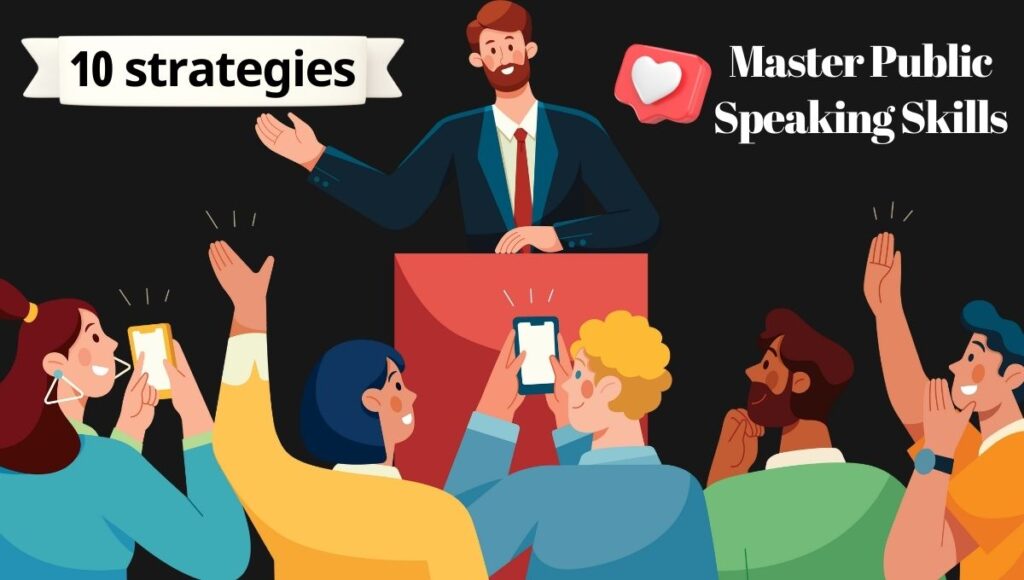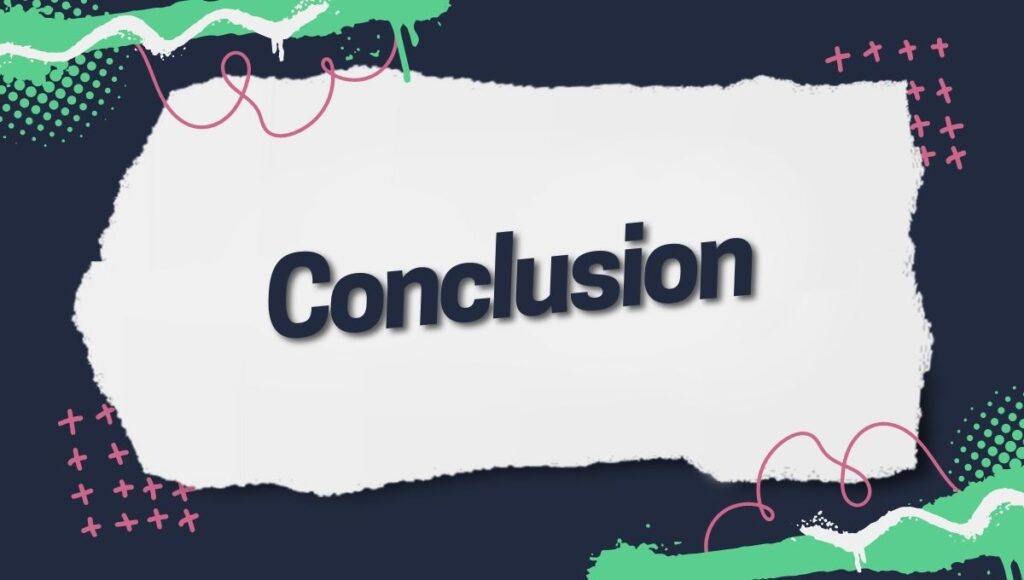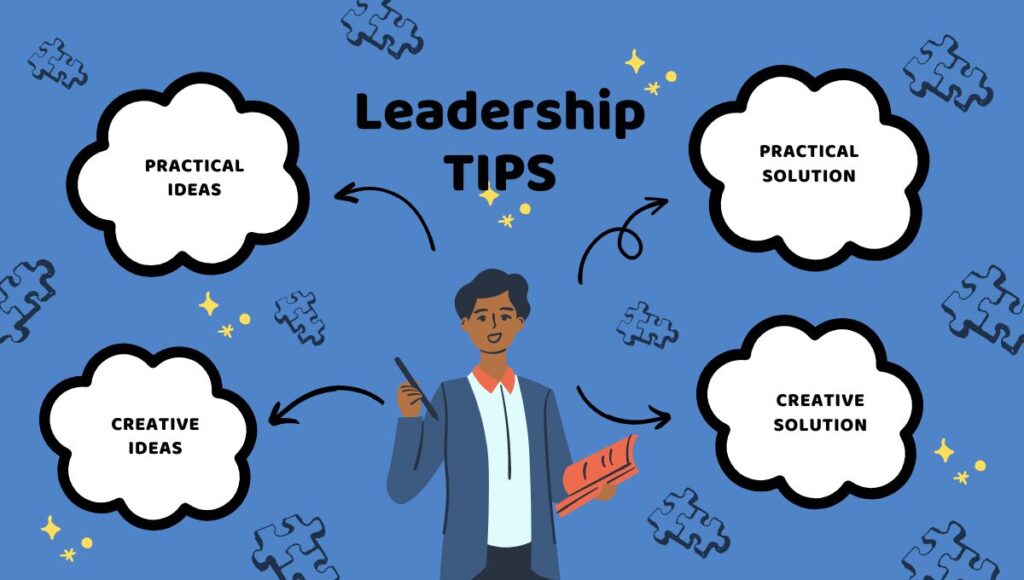Public Speaking Skills: 10 Best Practices to Improve It & Some Common Mistakes to Avoid.

Do you want to improve your public speaking skills and avoid common mistakes that can ruin your speech?
If you answered yes, then you are in the right place.
Public speaking is an essential skill that can help you in many aspects of your life, such as your career, your personal growth, and your social relationships.
However, public speaking can also be challenging and intimidating for many people.
You may feel nervous, anxious, or stressed before or during your speech. You may also make some mistakes that can affect your message, your credibility, or your audience’s engagement. But don’t worry, there is hope.
In this post, I will share with you 10 best practices to improve your public speaking skills and some common mistakes to avoid. By following these tips, you will be able to overcome your fear or anxiety, engage your audience, and deliver a memorable speech.
Are you ready? Let’s get started.
10 Best Practices to Improve Your Public Speaking Skills

Here are 10 best practices that you can apply to improve your public speaking skills and become a more confident and effective speaker.
- Practice and prepare. The more you practice your speech, the more confident and comfortable you will feel. Prepare your material well in advance and rehearse it several times. You can also record yourself or ask for feedback from someone you trust.
- Know your audience. Tailor your speech to suit the needs, interests, and expectations of your listeners. Research your audience and find out their background, level of knowledge, and preferences. Use appropriate language, tone, and examples that resonate with them.
- Organize your material. Structure your speech in a clear and logical way. Use an introduction, a body, and a conclusion. In the introduction, grab the audience’s attention, state your purpose, and preview your main points. In the body, develop your main points with supporting evidence and examples. In the conclusion, summarize your main points, restate your purpose, and end with a call to action or a memorable statement.
- Use humor, storytelling, and emotions: Make your speech more engaging and memorable by adding some humor, stories, and emotions. Humor can lighten the mood and break the ice. Stories can illustrate your points and connect with the audience. Emotions can evoke empathy and passion. However, be careful not to overdo it or offend anyone.
Some of the mistakes speakers make when using humor, storytelling, or emotions are:
- Using inappropriate, offensive, or irrelevant humor that may alienate or insult the audience.
- Telling long, boring, or unrelated stories that may distract or bore the audience.
- Showing too much or too little emotion may make the audience uncomfortable or indifferent.
- Use effective body language: Your body language can enhance or undermine your message. Use gestures, eye contact, facial expressions, and posture that convey confidence, enthusiasm, and sincerity. Avoid distracting movements, such as fidgeting, crossing your arms, or looking at the floor.
Some of the mistakes speakers make when using body language are:
- Using gestures that are too small, too big, or too repetitive may distract or annoy the audience.
- Avoiding eye contact or staring at one spot may make the audience feel ignored or uncomfortable.
- Showing facial expressions that are incongruent with the tone or emotion of the speech.
- Having a poor posture may indicate a lack of confidence, interest, or respect.
- Use visual aids: Visual aids can help you illustrate your points, clarify complex ideas, and keep the audience’s attention. You can use slides, charts, graphs, images, videos, or props to support your speech. However, make sure that your visual aids are relevant, simple, clear, and easy to see.
Some of the mistakes speakers make when using visual aids are:
- Using too many, too few, or no visual aids at all may make the speech boring, confusing, or overwhelming.
- Using visual aids that do not match the content, purpose, or audience of the speech.
- Using visual aids that are poorly designed, formatted, or displayed may make the speech unprofessional or unreadable.
- Relying too much on visual aids or reading from them may make the speech impersonal or scripted.
- Use your voice effectively: Your voice is one of your most powerful tools as a speaker. Use it to convey your message with clarity, variety, and impact. Adjust your volume, pitch, tone, pace, and pauses according to the situation and the audience. Avoid monotone delivery, mumbling, or speaking too fast or too slow.
Some of the mistakes speakers make when using their voice are:
- Speaking too loudly, too softly, or inconsistently may make the speech annoying, inaudible, or unclear.
- Speaking in a monotone voice that may make the speech dull or boring.
- Speaking too fast, too slow, or irregularly that may make the speech confusing or hard to follow.
- Using filler words, such as um, ah, like, you know, etc., may make the speech unprofessional or unprepared.
- Engage with the audience: Make your speech interactive and conversational by engaging with the audience. You can ask questions, solicit feedback, conduct polls or surveys, encourage participation or discussion, or use anecdotes or examples from the audience.
Some of the mistakes speakers make when engaging with the audience are:
- Not knowing how to start or end a speech that may make the speech weak or abrupt.
- Not showing enthusiasm or passion for the topic that may make the speech bland or uninspiring.
- Not adapting to the feedback or reactions of the audience that may make the speech irrelevant or inappropriate.
- Not acknowledging or respecting the opinions or questions of the audience that may make the speech arrogant or rude.
- Handle questions and objections gracefully: Be prepared to answer questions or address objections from the audience at the end of your speech or during it if appropriate. Listen carefully, acknowledge their concerns, and provide clear and honest answers. Do not get defensive, angry, or rude. If you do not know the answer, admit it and offer to follow up later.
- Evaluate yourself and seek feedback: After your speech, evaluate yourself and identify your strengths and areas for improvement. You can also seek feedback from others and learn from their comments and suggestions.
Some of the mistakes speakers make when evaluating themselves or seeking feedback are:
- Not recording or reviewing their speech that may prevent them from noticing their strengths and weaknesses.
- Not asking for feedback from others or ignoring their comments and suggestions that may limit their perspective and improvement.
- Being too harsh or too lenient on themselves that may affect their confidence and motivation.
These are some of the best practices and common mistakes that you can use to improve your public speaking skills and impress your audience.
But wait, there’s more.
Public speaking is a skill that can help you achieve your goals, influence others, and make a positive impact in the world.
However, public speaking can also be scary and very stressful for many people.
You may feel afraid of being judged, rejected, or criticized by your audience. You may also struggle with finding the right words, delivering your message effectively, and engaging your audience.
But you don’t have to worry, Because I am here for you, who made the the same mistakes and followed the same practices that we talked about above to improve my public speaking skills, up to the level that I can now even deliver a speech at UN without any hesitation
You can overcome your fear and master the art of persuasion by following these tips:
How to Overcome Your Fear and Master the Art of Persuasion

- Acknowledge and accept your fear. The first step to overcoming your fear of public speaking is to acknowledge and accept it. Don’t try to deny or suppress it. Instead, recognize that it is normal and natural to feel nervous or anxious before or during a speech. Fear is a sign that you care about your performance and your audience. It can also motivate you to prepare and practice more. 🙌
- Reframe your fear. The second step to overcoming your fear is to reframe it. Don’t think of it as a negative or harmful emotion. Instead, think of it as a positive or helpful emotion. Fear can help you focus, energize, and perform better. It can also make you more alert, creative, and adaptable. Instead of saying “I’m scared”, say “I’m excited”. Instead of saying “I’m nervous”, say “I’m ready”. 🚀
- Visualize your success. The third step to overcoming your fear of public speaking is to visualize your success. Before your speech, imagine yourself delivering it with confidence, clarity, and impact. See yourself as a competent and credible speaker who knows what to say and how to say it. Hear yourself as a captivating and convincing speaker who engages and persuades the audience. Feel yourself as a calm and composed speaker who handles any situation with ease. 🙏
- Prepare and practice. The fourth step to overcoming your fear of public speaking is to prepare and practice your speech. The more you prepare and practice, the more confident and comfortable you will feel. Prepare your material well in advance and rehearse it several times. You can also record yourself or ask for feedback from someone you trust. Practice in front of a mirror, a friend, or a small group of people. Practice in the same or similar setting as your actual speech. Practice with the same or similar visual aids, equipment, or props that you will use in your speech. 🎤
- Focus on your message and your audience. The fifth step to overcoming your fear of public speaking is to focus on your message and your audience. Don’t focus on yourself or your fear. Instead, focus on what you want to say and why you want to say it. Focus on how you can help, inform, inspire, or entertain your audience. Focus on how you can make a difference in their lives or in the world. Remember that you are not there to impress them or please them. You are there to serve them or solve their problems. 👥
These are some of the tips that can help you overcome your fear and master the art of persuasion in public speaking.
Conclusion

Public speaking is a skill that can benefit you in many ways, but it can also be challenging and stressful for many people.
However, by following the 10 best practices and avoiding the 10 common mistakes that I have shared with you in this post, you will be able to improve your public speaking skills and become a more confident and effective speaker.
I have always been interested in public speaking, but I used to be very afraid and nervous whenever I had to speak in front of a large audience.
I remember one time when I had to give a presentation at work about a new project that I was leading. I had prepared and practiced my speech for weeks, but I still felt anxious and stressed on the day of the presentation.
I was sweating, shaking, and stuttering as I walked up to the podium. I felt like everyone was judging me and waiting for me to fail. I forgot some of my points, messed up some of my slides, and lost the attention of the audience. I felt like a failure and a fool.
After that humiliating experience, I decided to improve my public speaking skills and overcome my fear. I followed some of the tips that I have shared with you in this post, and they really helped me a lot.
By following these tips, I was able to overcome my fear and master the art of persuasion in public speaking.
I became a more confident and effective speaker who could deliver engaging and memorable speeches.
I also received more recognition, respect, and opportunities at work and in other areas of my life.
This is my personal story of how I improved my public speaking skills and avoided common mistakes.
I hope you found it helpful and inspiring.
Do the same and you will also be able to overcome your fear, engage your audience, and deliver a memorable speech.
So what are you waiting for? Start practicing and preparing your speech today and see the difference for yourself.
I hope you enjoyed this post and found it helpful. If you did, please share it with your friends and leave a comment below. I would love to hear from you.
Do you have any other tips or questions about public speaking? Let me know in the comments section below.
Thank you for reading and happy speaking!




